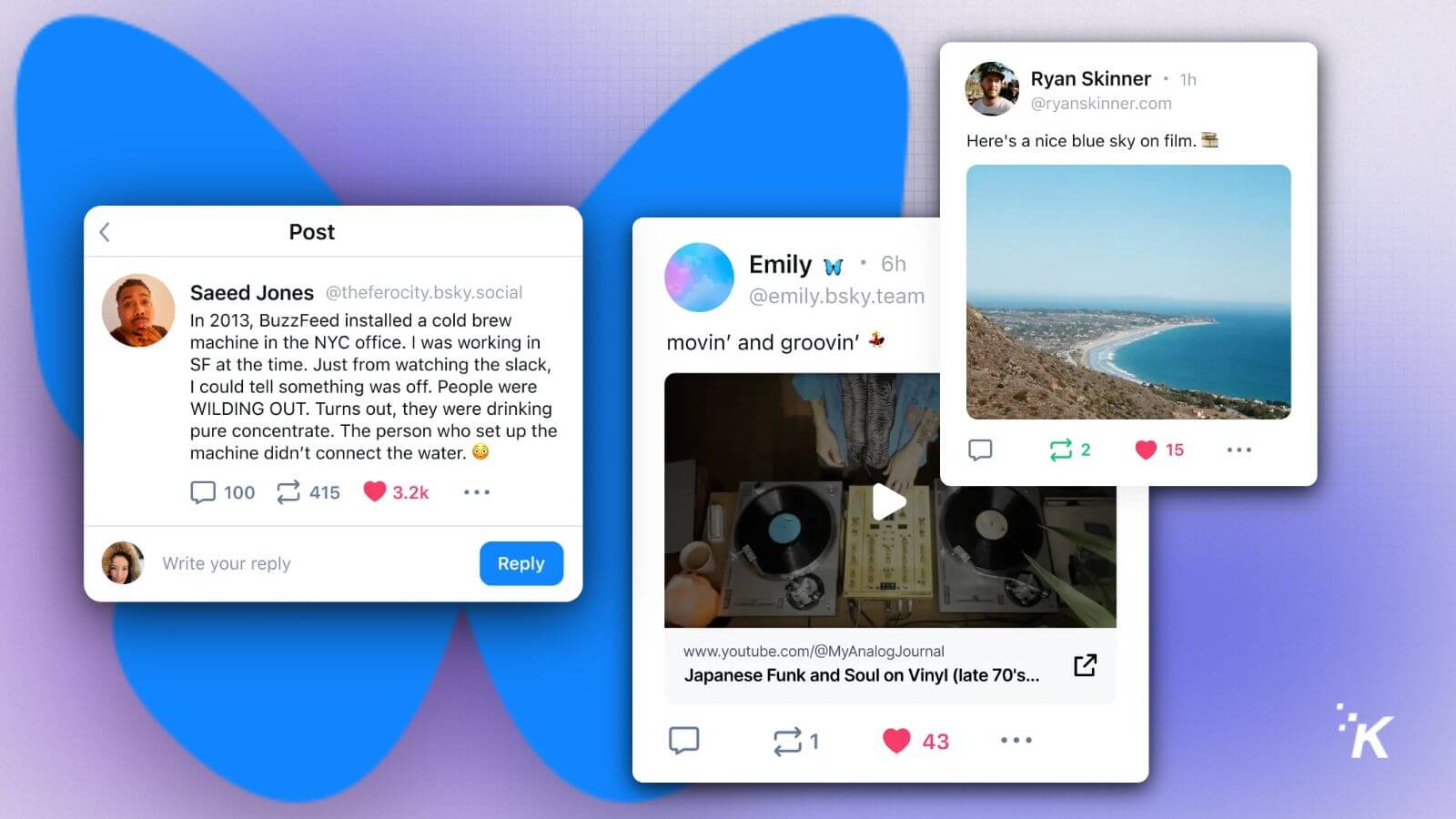
What is Bluesky? And does it have the potential to be a Twitter killer?
Just a heads up, if you buy something through our links, we may get a small share of the sale. It’s one of the ways we keep the lights on here. Click here for more.
Everyone says social media is broken. Big Tech says they’ll fix it. Plot twist, they haven’t:
Thankfully, Bluesky, a new social platform gaining traction among users seeking an alternative to Twitter, just proved big tech wrong by letting users build their own damn solution.
As of mid-November, Bluesky has surged to 15 million users, with 2.5 million new users joining in the last week alone.
With Twitter facing its own challenges under Elon Musk’s ownership, Bluesky is stepping up as a contender in the microblogging space. Does it have what it takes to dethrone its unofficial rival?
We’ll discuss everything you need to know about Bluesky, from signing up to its unique features. Let’s get to it then.
What is Bluesky?

Bluesky is a decentralized social media platform that offers a familiar and somewhat user-friendly experience, much like Twitter.
In fact, it’s often compared to early Twitter, with a casual tone and a focus on engaging with friends.
Users can create profiles, post thoughts, and interact with others through liking, reposting, and replying to posts. And by the way, they’re called unofficially called “skeets” now. Hey, I don’t make the rules.
So, what’s the big deal about BlueSky?
Here’s where things get interesting:
- You Get to Choose Your Algorithm: Tired of some faceless entity deciding what you see? BlueSky lets developers create different algorithms, so you’ve got options for how your feed gets curated.
- Decentralized, Baby!: BlueSky operates on a decentralized network. Translation? Users can create their own servers for storing data, which is a massive shift from how most social media platforms work.
- Play Nice with Others: Because BlueSky uses a certain protocol, you can share posts across networks like Mastodon seamlessly. It’s all about that interoperability..
- Customization is King: BlueSky is all about letting users tailor their experience. You can customize your feeds, create lists, and the moderation approach focuses on community input for a healthier environment.
How Does Bluesky Work?
What sets Bluesky apart from Twitter is its underlying technology. The platform operates on a decentralized system, running on multiple smaller servers connected by the AT Protocol.
This approach allows users to create their own applications and communities within the platform, offering customized rules and algorithms to suit their preferences.
In its beta phase, users can only join the bsky.social network, but Bluesky plans to be federated, meaning that endless individually operated servers will be able to interoperate with each other.
If this concept sounds familiar, it’s because Mastodon, another social platform making waves, is built on a similar decentralized infrastructure.
How do you sign up for Bluesky?

It’s easy, click this link and follow the new user instructions.
Previously, you had to wait on a waitlist. The app could only handle so many new users at a time, so new users had to wait to wait or get invited by another user to get in.
Bluesky launched as an invite-only beta in February 2023. However, in February 2024, the social app opened registration to the public, having reached around three million users by that time.
Bluesky is no longer invite-only as of February 2024, allowing anyone to sign up.
What makes Bluesky different from Twitter?
The most obvious is that Elon Musk isn’t at the helm, so you won’t find any of his signature shenanigans here.
Although Bluesky offers a similar interface and functionality to Twitter, some key differences set it apart:
- Decentralization: Bluesky’s decentralized system offers users more control over their experience and fosters the creation of unique communities with customized rules.
- Open Protocol: The platform aims to enable the seamless sharing of posts between different social media platforms in the future.
What’s it like to actually use Bluesky?
The interface will feel familiar if you’re coming from X. You’ve got your posting, replying, messaging, and lists. But BlueSky’s evolved since launching to the public in February. Now you’ve got features like:
- DMs and Video: Finally, you can have actual conversations via direct messages, and video adds a whole new dynamic.
- Keeping Things Civil: BlueSky’s rolled out features like custom feeds, pinned posts, and some seriously powerful blocking tools to help keep the vibe positive.
- Curate Your Space: Users can mute specific keywords and subscribe to community-created blocklists right from the platform. It’s all about creating the space you want.
Is Bluesky worth it?
As an emerging platform, Bluesky has attracted high-profile users such as Alexandria Ocasio-Cortez, Chrissy Teigen, and Twitter OG, Dril.

Its familiar interface, combined with the backing of Jack Dorsey, makes it a potentially viable alternative to Twitter.
However, it’s essential to consider that Bluesky is still developing, and many of its promised features are unavailable. Furthermore, the platform’s success will depend on its ability to grow and maintain its user base.
Bluesky is growing rapidly and is currently picking up around one million new sign-ups a day
What are the other Twitter alternatives?
While Bluesky has gained significant attention, it’s not the only alternative to Twitter. Platforms like Mastodon, Hive, CounterSocial, T2, and Post have also emerged as potential contenders.
However, none have captured the same level of interest as Bluesky, thanks to its association with Dorsey and its familiar user experience.
Bluesky feels like a mostly complete service compared to some of the other alternatives out there.
Wrapping up – who are you pledging allegiance to?
Bluesky is an intriguing addition to the mix, offering a familiar experience with the potential for greater use, control, and customization.
While it’s too early to determine if it will replace Twitter or surpass its user base, the platform’s association with Jack Dorsey and its growing popularity make it an option worth considering for those seeking a fresh social media experience.
As Bluesky continues to develop and refine its features, it will be interesting to see how it evolves and whether it can truly compete with established platforms like Twitter. All we can do now is sit back and enjoy the show.
Are you excited about Bluesky’s decentralized approach to social media? Do you think it has what it takes to dethrone Twitter? Share your thoughts on Bluesky’s unique features and potential impact on the social media landscape in the comments below
